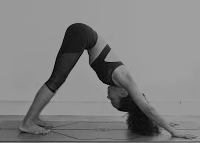Yoga is a powerful practice for improving physical, mental, and emotional health. Its roots in ancient India connect it to holistic healing, but modern research supports yoga’s numerous health benefits, ranging from stress reduction to chronic disease management. This article delves into the science of benefits of yoga for health, how yoga improves mental health, and practical tips for incorporating it into daily life.
The Science of Yoga: Mind-Body Harmony:
Yoga integrates physical postures (asanas), breathing techniques (pranayama), and meditation to create a state of balance. Studies show that these components activate the parasympathetic nervous system, commonly referred to as the “rest and digest” system, which counters the effects of chronic stress. Key physiological effects include:
- Reduced cortisol levels, alleviating stress and anxiety.
- Improved cardiovascular health by maintaining heart rate and blood pressure.
- Enhanced brain function, with increased focus and emotional resilience.
Yoga’s Health Benefits Backed by Research:
- Stress and Anxiety Management Yoga is widely recognized for its role in reducing stress. A study published in Frontiers in Psychiatry found that yoga can significantly decrease symptoms of generalized anxiety disorder (GAD) through relaxation and mindfulness.
- Pain Relief Chronic pain conditions, such as lower back pain and arthritis, often respond well to yoga. A meta-analysis in Annals of Internal Medicine reported that yoga is as effective as physical therapy for managing chronic low back pain.
- Cardiovascular Health Yoga can improve heart health by reducing hypertension, cholesterol levels, and arterial stiffness. Its combination of physical activity and stress reduction makes it particularly effective for preventing heart disease.
- Mental Health Support Regular yoga practice has been linked to improved outcomes in depression and post-traumatic stress disorder (PTSD). Meditation and mindfulness aspects of yoga enhance emotional regulation.
- Improved Flexibility and Strength The asanas in yoga increase joint mobility, muscle strength, and overall balance. This is especially beneficial for older adults seeking to prevent falls or maintain independence.
- Hormonal Balance For women, yoga can ease symptoms of menopause and regulate conditions like polycystic ovary syndrome (PCOS) through its stress-reducing and metabolism-boosting effects.
Types of Yoga: Choosing the Right Practice
- Hatha Yoga: Gentle and beginner-friendly, focusing on basic poses and relaxation.
- Vinyasa Yoga: A dynamic style that links breath to movement, ideal for building endurance.
- Iyengar Yoga: Emphasizes alignment and uses props like blocks and straps for precision.
- Bikram/Hot Yoga: Performed in a heated room, this style promotes detoxification and flexibility.
- Restorative Yoga: Involves long-held poses and props to promote deep relaxation, excellent for stress relief.
Tip: Beginners should start with Hatha or Iyengar yoga to build a strong foundation before exploring more advanced styles.
Yoga for Chronic Conditions:
Yoga has emerged as an adjunct therapy for several chronic conditions:
- Diabetes: Regular practice helps regulate blood sugar levels through improved insulin sensitivity.
- Asthma: Breathing exercises like pranayama can enhance lung capacity and control symptoms.
- Cancer Rehabilitation: Yoga aids in reducing fatigue, improving quality of life, and managing treatment-related side effects.
Practical Example: A Simple 10-Minute Yoga Routine





Incorporating Yoga into Your Routine:
- Start Small: Begin with 10–15 minutes of simple stretches or guided yoga videos.
- Focus on Consistency: Practicing even 3–4 times a week can yield significant benefits.
- Join a Class: Group settings provide guidance, motivation, and a sense of community.
- Use Technology: Apps like Down Dog or Yoga with Adriene offer accessible home practices.
Addressing Common Misconceptions:
- Yoga is Not Only for the Flexible: Flexibility develops over time; beginners of all levels are welcome.
- Yoga is a Complete Workout: While not a substitute for high-intensity cardio, yoga strengthens muscles and improves cardiovascular health.
- Yoga is More Than Stretching: Its mental and emotional benefits are equally transformative.
Yoga is a time-tested practice with profound health benefits that extend far beyond the mat. Whether you’re seeking stress relief, physical fitness, or support for chronic conditions, yoga offers a customizable approach for holistic well-being. With its growing body of scientific evidence, yoga has solidified its place as a cornerstone of modern wellness.




